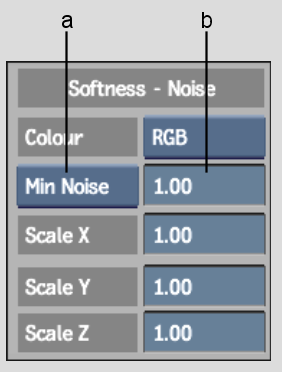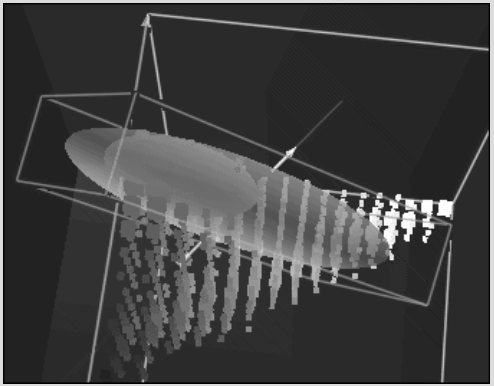Show in Contents

Add to Favorites

Home: Inferno

Setting the Softness

Creating a Precise Key

Using YUV Softness

Removing Noise from Softened Areas
Once
you sample for softness, use the Minimize Noise option to remove
grain from the softened areas. Graininess, also known as noise,
can occur at the edges of the key, or in the semi-transparent areas
such as water or glass.
First, sample an area containing noise. The
3D Keyer analyses the sampled area. Using Minimize Noise, you can
then scale the softness in such a way as to minimize the noise in
the softened areas.
Minimize Noise is especially useful for semi-transparent
areas and edges requiring a lot of softness, such as Smoke, reflection,
and shadows.
TipIf
the entire clip is grainy, or if you are not satisfied with the
results after scaling the softness, consider using another approach.
For example, degrain the clip with Degrain before keying with the
3D Keyer. You can add a Degrain node to the beginning of the Matte
branch anytime. Additionally, use Minimize Noise on a degrained
clip if needed.
To
remove noise:
- Sample
for softness. See
Setting the Softness.
- Zoom
in and choose the area you want to analyse. Look for graininess
in the softened areas. For transparencies, look for graininess in the
semi-transparent areas.
- Press N (Noise) and drag a rectangle in
the selected area.
The 3D Keyer analyses the pixels in the rectangle.
- Select
Min Noise from the Softness Scaling box.
An arrow appears in the softness ellipsoid,
showing the direction in which the softness needs to be increased
to reduce graininess in the sampled area.
- Increase
the softness using one of the following methods:
- Drag
the cursor over the Scaling field to the right. The softness is
increased based on the results of the analysis from the grainy region.
Observe that the softness ellipsoid is scaled in the direction of
the arrow.
NoteEach time you change the Scaling value,
it is returned to 1.00.
- Use
a colour value plotted in the image window as the basis for virtual
point scaling of softness. To do this, use the O hot key to plot a point in the
image window, then press Ctrl+V,
and click and drag in the Player.
- If
some edges or areas are still not softened, analyse again in that area
and repeat the procedure.
- Return
the Softness Scaling to Prop (proportional scaling).
Alternatively, press Alt + N to scale softness based on the
Minimize Noise analysis. This hot key is the equivalent of selecting
Minimize Noise in the Softness Scaling box, then scaling the softness
using the Scaling field.
NoteWhen Minimize Noise scaling is selected,
it controls the arrow in the RGB viewer. To manually control the
arrow, you must return to proportional scaling.
To
scale softness using Alt+N:
- Perform
a noise analysis.
NoteAlt + N only works if an analysis for
the noise has been done.
- Press Alt + N and
click and hold the cursor anywhere in the image window. Drag the
cursor to the left to decrease the noise or to the right to increase
it.
The softness is scaled according to the noise
analysis. Notice that Minimize Noise appears in the Softness Scaling
box as you use the hot key. When you release the cursor, the Softness
Scaling option returns to Prop.
TipFor transparencies, use the V hot key to remove unwanted grey
areas in the matte, then use Alt+N to
reduce noise in areas you chose to soften (the transparency). Perform
the two procedures alternately until you achieve the best result.





